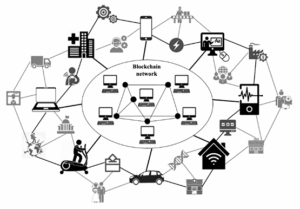We talk about public blockchains as “Public Commons” as a new type of shared digital infrastructure that everyone may use, like public roads or parks in the real world. Public blockchains are different from private, permissioned systems because they are open, clear, and maintained by everyone. They provide a basic layer for decentralized apps and services. We want to know how this technology can let people work together, be open, and generate value in ways that have never been possible before. It does this by giving everyone a neutral, trustless platform to build on and use, which encourages creativity in communities all around the world.
Using Blockchain to Build Shared Digital Infrastructure
The Digital Commons: Open and Shared Ownership
Public blockchains are a huge step towards making digital resources available to everyone. The fact that anybody can use a public chain without asking for permission is what makes it special. Anyone can join the network, help to keep it safe and examine all the recorded data without having to ask a central authority for permission. Because it is open, anyone may join in. This gets away of gatekeepers and makes the digital world a truly global and welcoming place where new ideas can come from anywhere. No one person owns a public blockchain. Everyone who uses it works together to keep it running and make decisions about how it should work. The network has multiple ways of reaching consensus. Decentralized governance methods are typically used to make decisions about the future development and rules of the blockchain. This makes sure that the public chain satisfies the needs of the complete community.

Challenges and Future Horizons: Making the Commons Bigger
Public blockchains have a lot of potential, but there are some problems that need to be solved before they can be used by everyone. Public chains that use Proof-of-Work, in particular, have problems with scalability and energy use. There can be a lot of traffic on the network and higher costs when there are a lot of transactions. The processing power needed can also be very high. Researchers and developers are still working on new consensus methods (like PoS) and Layer 2 solutions to make public chains more efficient and better for the environment. Interoperability between multiple public chains is very important for a genuinely universal digital commons. There are projects working on ways to make it easy for assets and data to transfer between different blockchains. This will make the ecosystem more linked and coherent. Another big problem is making things easier to use and improving the user experience. This is important since it will be necessary to recruit and keep a wider audience for decentralized applications.
Conclusion
We see a future at “Public Commons” where public blockchains are the main building blocks of a digital world that is more open, honest, and fair. We can create a digital commons that helps everyone/myself by embracing their permissionless nature, encouraging communal governance, and using their power for open record-keeping and self-sovereign identity. Even while there are still problems, the constant innovation in this area promises to open up new levels of trust and collaboration, giving people all around the world the power to establish a shared digital future.
Talk to our experts about secure, scalable blockchain solutions